Attached is the circuit I have been analyzing.

Here the intention is to calculate the voltage across V_A and V_B - (See the red colored letters in the circuit diagram.)
I have calculated V_R1 using Kirchhoff's voltage law as follows,

Edit
I have taken voltage across V_A and V_B as follows,
 Can anyone verify the calculation.
Can anyone verify the calculation.
